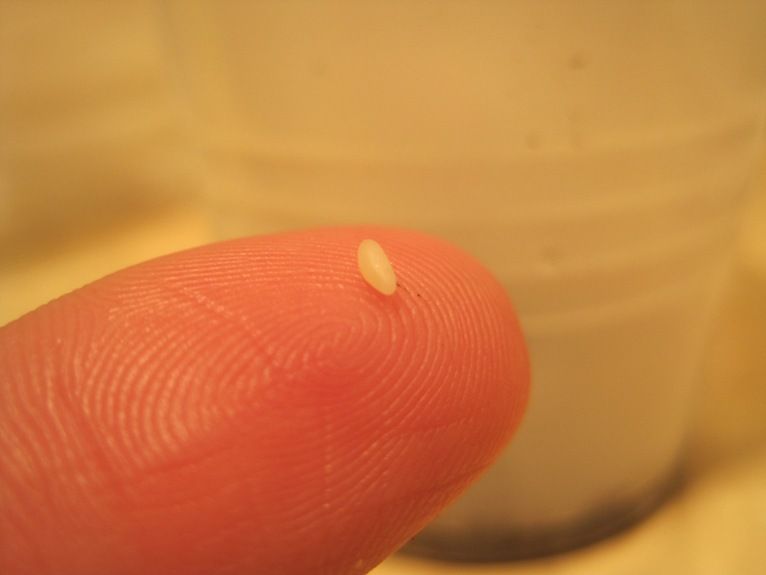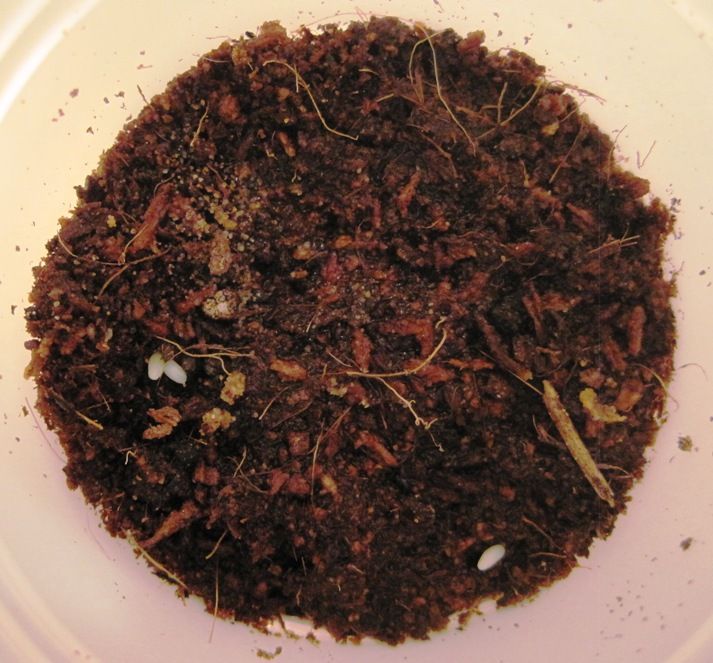Speed Gimp
L1
The beetle tank is in my son's room and every night when I go in to check on my son while he's sleeping, I shine a flashlight into the tank to see if the beetles are active. Last night, I shined the light into the tank and saw three glistening white object partially exposed in the substrate. I immediately went to email Peter Clausen. When I returned two of the eggs had disappeared, but I found two more. I've removed all three eggs and put them in a in cup with a thin layer of damp coconut fiber. I plan on moving them to a container with a mixed substrate of coconut fiber and a compost that I've made (over the course of a year) from dead leaves. Tonight I saw another egg, but when I returned from getting the cup to transfer the egg to, it was being eaten by one of the beetles.

Any advice on improving the odds of a successful hatching/rearing would be much appreciated.

I've attached pictures of the eggs.
-Gimpy


Any advice on improving the odds of a successful hatching/rearing would be much appreciated.
I've attached pictures of the eggs.
-Gimpy


Last edited by a moderator:
